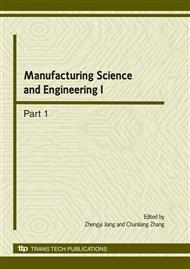p.547
p.552
p.556
p.560
p.565
p.570
p.574
p.578
p.582
Influence of Plastic Deformation Degree on Microstructure and Mechanical Properties of the Magnesium Alloy ZK60 after T5 Treatment
Abstract:
The effects of extrusion ratios (15, 30, 45and 60) on microstructure and mechanical properties of ZK60 magnesium alloy after T5 treatment were investigated. The results show that mechanical properties increase with the increase of extrusion ratios from 15 to 45.However, when the extrusion ratio is increase to 60, each mechanical property is decreased severly.By comparison,in the extrusion ratio of 30, ZK60 magnesium alloy after T5 treatment has excellent comprehensive mechanical properties.Different degrees of dynamic recrystallization appeared in the extrusion process and induced precipitation of second phase.The precipitation of the second phase is beneficial to the grain refinement and meanwhile to the promotion of the strength.
Info:
Periodical:
Pages:
565-569
Citation:
Online since:
March 2010
Authors:
Keywords:
Price:
Сopyright:
© 2010 Trans Tech Publications Ltd. All Rights Reserved
Share:
Citation:


